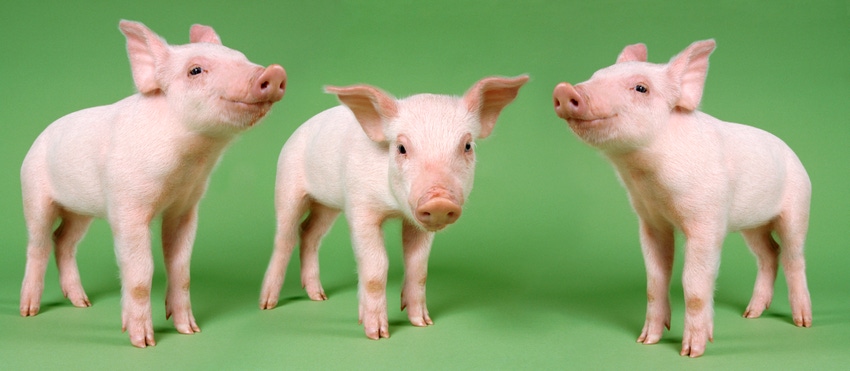Pig’s response to its first dry feed sets the pace for strong finishing performance.
May 21, 2018

End-of-nursery weights are the strongest predictor of finishing weights, according to Purina Animal Nutrition Research. Feed intake in the early nursery period is closely tied to nursery performance, so the way a pig responds to its first dry feed sets the pace for performance through finishing.
To support the best potential return on nursery feed investments through finishing, choose feeds formulated to enhance early and consistent intake with enticing and highly digestible ingredients, Purina Animal Nutrition said.
On average, early feed intake in the first three to four days after weaning is too low to meet the pig’s energy requirements for maintenance and growth due to stresses on pigs caused by being removed from the sow, transportation, introduction to a new environment and other factors, Purina Animal Nutrition said.
The effects of that can be seen on performance, but what often can’t be seen is the negative impact on gut development and function, the announcement said. Reduced feed intake can lead to a breakdown in the intestinal lining, opening the door to a microbial imbalance or pathogen exposure.
A pig’s activated immune system pulls as much as 27% of energy from growth and maintenance to combat a potential illness, according to recent research from Iowa State University that Purina Animal Nutrition cited. Even if the pig doesn’t get sick, poor gut function can impair appetite and reduce intake, creating a downward spiral.
“When feed intake drops, inconsistent growth, weight loss and less-than-optimal gut development and function can follow,” said Stacie Crowder, lead nutritionist, Purina Animal Nutrition swine technical solutions. “Early and consistent feed intake is the foundation of growth, weight gain and excellent gut function.”
Producers have the power to create a positive feedback loop by choosing feed with research-proven, intake-enhancing ingredients that drive feeding behavior and keep pigs coming back for more, Crowder added.
Pigs imprint on early feed sources, similarly to people, but the difference is that pigs have 50-60% more tissue and nerve cells to collect and process flavors and odors than humans have.
“The right combination of ingredients in nursery feeds can drive pigs to the feeder, even though they’re unfamiliar with the food source,” Crowder said.
The taste and smell of feed might drive the first bite, but the chemistry of repeat eating goes beyond the mouth and nose. Once a pig starts eating, receptors along the digestive tract fuel digestive function. For example, these receptors trigger the production of saliva, which is a first step in digestion, and insulin, which helps the pig use the energy it consumes in feed. These receptors also influence chemical responses that can either stimulate the pig’s urge to eat or reduce that urge.
At 21 days, the weaned pig’s stomach is about the size of an egg, or about 2 oz, and about two-thirds of that space is available for feed and water, so a newly weaned pig can eat only about 1 oz. of feed at a time.
“We must do all we can to encourage newly weaned pigs to return to the feeder and eat their fill multiple times per day,” Crowder said. “Providing feeds with enticing and highly digestible ingredients will help trigger positive sensory feedback for consistent feed intake, putting pigs on track for efficient growth and optimal performance through finishing.”
You May Also Like


.png?width=300&auto=webp&quality=80&disable=upscale)
